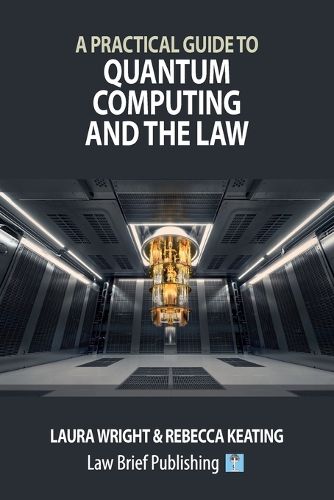Readings Newsletter
Become a Readings Member to make your shopping experience even easier.
Sign in or sign up for free!
You’re not far away from qualifying for FREE standard shipping within Australia
You’ve qualified for FREE standard shipping within Australia
The cart is loading…






This title is printed to order. This book may have been self-published. If so, we cannot guarantee the quality of the content. In the main most books will have gone through the editing process however some may not. We therefore suggest that you be aware of this before ordering this book. If in doubt check either the author or publisher’s details as we are unable to accept any returns unless they are faulty. Please contact us if you have any questions.
Quantum computing has the potential to revolutionise various aspects of our work and daily lives by harnessing the power of quantum mechanics to deliver faster results and solve complex problems that classical computers cannot handle. This book is designed to address current and future legal issues to assist lawyers as quantum computing continues to be adopted more widely.
The book serves as a practical guide to help readers navigate the technology and its legal implications. It begins by explaining what quantum computing is and its practical significance, before delving into the legal ramifications of this technology. It covers existing legal frameworks related to the adoption and use of quantum computing in the contexts of national security and sanctions. Furthermore, it explores current and emerging legal issues in areas such as data protection, risks for businesses, and intellectual property. Finally, the authors offer some practical considerations for lawyers involved in litigation concerning quantum computers.
CONTENTS
Chapter One - Introduction
Chapter Two - What Is Quantum Computing?
Chapter Three - The Practical Significance of Quantum Computers
Chapter Four - National Security and Sanctions
Chapter Five - Security Breaches and Data Protection
Chapter Six - Risks to Commercial Parties and Organisations
Chapter Seven - Quantum Computers and Intellectual Property
Chapter Eight - Litigating Disputes Regarding Quantum Computing
Chapter Nine - Approach in Other Jurisdictions
Future Developments and Conclusion
$9.00 standard shipping within Australia
FREE standard shipping within Australia for orders over $100.00
Express & International shipping calculated at checkout
This title is printed to order. This book may have been self-published. If so, we cannot guarantee the quality of the content. In the main most books will have gone through the editing process however some may not. We therefore suggest that you be aware of this before ordering this book. If in doubt check either the author or publisher’s details as we are unable to accept any returns unless they are faulty. Please contact us if you have any questions.
Quantum computing has the potential to revolutionise various aspects of our work and daily lives by harnessing the power of quantum mechanics to deliver faster results and solve complex problems that classical computers cannot handle. This book is designed to address current and future legal issues to assist lawyers as quantum computing continues to be adopted more widely.
The book serves as a practical guide to help readers navigate the technology and its legal implications. It begins by explaining what quantum computing is and its practical significance, before delving into the legal ramifications of this technology. It covers existing legal frameworks related to the adoption and use of quantum computing in the contexts of national security and sanctions. Furthermore, it explores current and emerging legal issues in areas such as data protection, risks for businesses, and intellectual property. Finally, the authors offer some practical considerations for lawyers involved in litigation concerning quantum computers.
CONTENTS
Chapter One - Introduction
Chapter Two - What Is Quantum Computing?
Chapter Three - The Practical Significance of Quantum Computers
Chapter Four - National Security and Sanctions
Chapter Five - Security Breaches and Data Protection
Chapter Six - Risks to Commercial Parties and Organisations
Chapter Seven - Quantum Computers and Intellectual Property
Chapter Eight - Litigating Disputes Regarding Quantum Computing
Chapter Nine - Approach in Other Jurisdictions
Future Developments and Conclusion